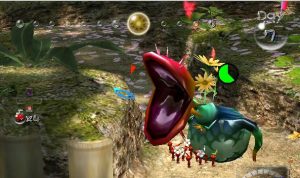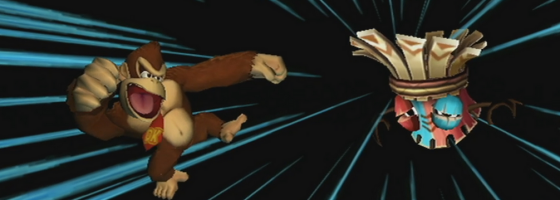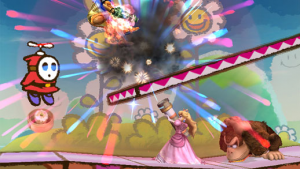The big news last week was Nintendo beginning their push onto YouTube… but not in the way that everyone was expecting. Nintendo has begun cracking down on Let’s Play videos of Nintendo games and demanding that they receive all ad revenue from them.
In return, many YouTube accounts took down their videos and swore off of showing anything Nintendo related ever again. Now as the copyright holder, Nintendo is within their right to do this, but are they in the right?
Nintendo Power (of attorney):
Looking at this argument from Nintendo’s side, they are within their right on the legal side. Major companies are very protective of their IPs as they are their bread-and-butter. And Nintendo easily has some of the most recognizable characters this side of Disney and Warner Bros.
IPs aimed at the family friendly market are both lucrative and a challenge to maintain, as you don’t want to create anything that would be seen as too mature. When it comes to keeping a clean image, Nintendo has gone above and beyond to say the least.
The rumor has been that Nintendo made the social features of the Nintendo Wii so convoluted as a way to protect children from online pedophiles. Now just imagine if a child wanted to find some footage of Mario online and found a video of someone playing Mario while making sexist and racial remarks and then tells their parents that Mario was swearing.
Of course people who are educated in game design will know that the previous statement would be ludicrous, but it is a PR nightmare for any major company. Now, the other part of this issue was the issue of copyright ownership and how that involves ad revenue that came from Let’s Plays.
As the owner of the copyright, Nintendo by law can make money off of licensing said copyright, or allowing it to be used in something under a specific contract deal. You don’t see tons of different Nintendo toys on the toy shelves, as those companies did not get the approval from Nintendo and don’t want to risk a lawsuit over it.

There aren’t really pictures of Nintendo gameplay that relate to this issue, so I’m going to show combat shots.
With these Let’s Plays, people are getting money by using Nintendo’s copyrighted characters and images.
If someone uploaded every cut-scene for Final Fantasy 13, would someone who watched the entire video want to buy the game at that point?
And for those that won’t, that means that Square-Enix would receive nothing for their work, while someone else would pocket the cash. But as many of you are getting ready to comment on: What about Fair Use?
Playing Fair:
The Fair Use doctrine is an important defense in copyright claims and fraudulent cases. When it comes to distinguishing fair use, the following *four factors are the key determinations:
- the purpose and character of the person’s use
- the nature of the copyrighted work
- the amount and substantiality of the portion taken, and
- the effect of the use upon the potential market.
In 1994 the first factor was used by the Supreme Court to declare something as under fair use by the transformative factor. What that means is if someone takes a property and transforms it into something that has new meaning and purpose, then it would be considered fair use.
To put it another way, if someone puts enough work into something to make it stand out and be considered unique from the original property, then the property holder doesn’t have a claim to it.
I can put up screenshots of video games both posted publicly and those I take from a game and use them freely, as I’m including them in analysis and critical pieces beyond the scope of the original image. The same goes for someone putting together an educational lesson on Game Design.
The transformative factor is a key defense for the people putting up Let’s Plays. These people are not just putting up gameplay footage; they are editing game footage, adding unique commentary and putting their own voice in the work.
Someone like TotalBiscuit puts a hell of a lot more work into his videos, then just uploading footage and calling it a day. And the people, who do put in the extra work, are normally the ones with the most views and earn the most for their content.
However even just the act of uploading straight footage is up for debate under the fair use doctrine. While a company may own the characters, they do not own the actual gameplay that is being performed.
Blizzard may own the characters, art style and general design of Starcraft, but they don’t own the technique of a zerg rush, or a 4-gate push strategy. The people who upload and comment on Starcraft matches are using content that goes beyond the copyright and transforming it into something else.
Going back to the original argument, if someone uploads master level footage of playing the latest Mario game, would that be transformative enough to warrant fair use? I don’t know and neither does the Supreme Court.
Ruling it Out:
The problem is that the digital age has sped ahead of the law, and the government has yet to make official rulings on many of the issues of digital distribution. That is why game companies have taken it into their own hands with ToS agreements and their own rules for how digital content should be distributed.
As with cases of this nature, you can bet that other companies are keeping an eye on this issue and may alter their policies depending on the outcome. But until we get an official ruling, all we can do is express our opinions on the matter.
While Nintendo has the right as copyright owner to request the ad revenue from people making use of their work, to completely cut out the people who put work into their content I feel is a huge mistake.
Personally I think this is another case of Nintendo not understanding the online world and the ramifications that come with it.
They will no doubt earn some short-term money, but will lose out on the long run when people no longer show off their products and what can be done in them.
Especially when we think of the hardcore gamers: the ones that Nintendo moved away from and is now trying to get back to their platform. The other side of these videos is that they are free advertisements for the games in question.
As the saying goes: “A picture is worth a thousand words”, and watching game footage shows a greater representation of a product than words could convey. Hopefully Nintendo and other major developers will see the positives outweigh the loss of control on their properties.
Lastly, if you would like more information about the legal side of this issue, check out this Gamasutra piece written last week.
* Information taken from: http://fairuse.stanford.edu/Copyright_and_Fair_Use_Overview/chapter9/9-b.html



